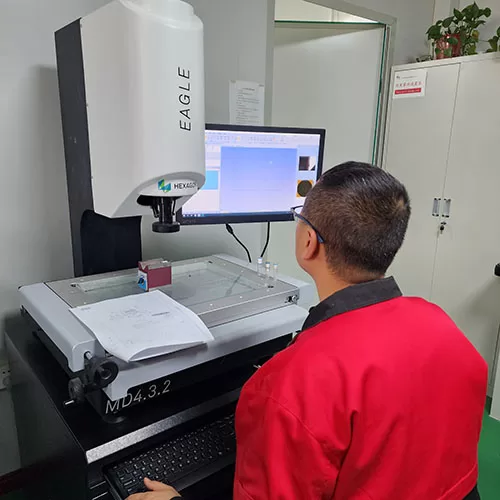We specify a standard dimensional tolerance of ±0.005″ for CNC machined parts. However, our CNC mills, CNC lathes, 3-axis mills, and 5-axis mills can achieve tighter tolerances. So if you need ultra-tight tolerances, please Click “Contact Us” below.
Tighter tolerances may increase your CNC machining costs, so we need to clearly define this when ordering.
QUESTIONS AND ANSWERS ABOUT CNC MACHINING TOLERANCES
What is CNC machining tolerance?
In engineering, tolerance refers to the total allowable variation of parts produced in the same batch within a specified size, that is, the difference between the upper and lower limits. In the field of CNC machining, tolerance is used to standardize and ensure product quality. The function of tolerance is to control the dimensional changes of the part, so that it can fit with other parts.
So how do CNC machinists express CNC machining tolerances on drawings? CNC machine shops measure parts numerically, often preceded by a ± symbol. If a part that is 1.5 inches tall requires a tolerance of ±0.005”, the final part should fall within the range of 1.495” and 1.505” to pass quality inspection.
How to measure CNC machining tolerances??
In the production process, in order to ensure the accuracy of part dimensions, measurement links are indispensable, including the inner and outer diameters, shaft diameters, hole diameters, surface roughness, etc. of the parts. These parameters require many kinds of measuring tools to complete the measurement. When selecting measurement tools, you also need to consider factors such as the size of the part, accuracy requirements, and the measurement environment. Therefore, we need to choose corresponding measurement tools for different measurement scenarios. Common measuring tools include digital calipers, height rulers, micrometers, dial indicators, angle rulers, micrometers, laser rangefinders, three-dimensional coordinate measuring machines, image measuring instruments, etc. For the measurement of irregular positions of parts, distance measurement from point to surface, line to surface, circle to surface, etc., calipers cannot be used to measure directly. You can use an imager to establish a benchmark before measuring. If the imager cannot meet the measurement needs, you can use three coordinates to establish a benchmark and then measure.

